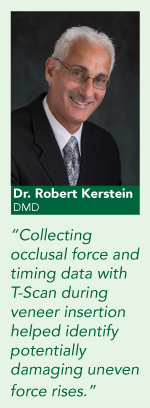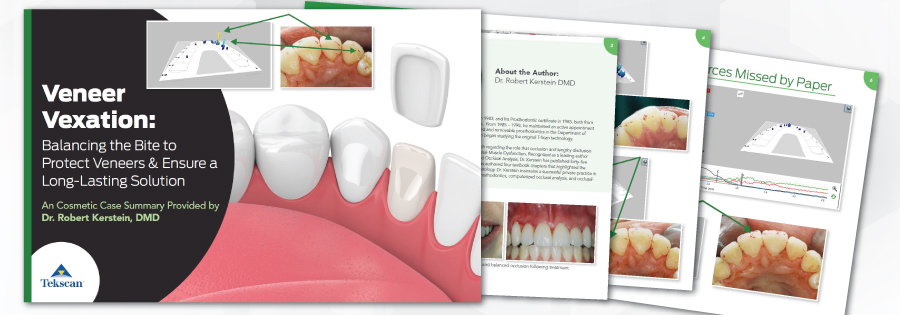 This case details a 25-year-old female patient, who, three years prior to these photographs, had six maxillary anterior veneers placed. Unfortunately, over the three years of intraoral service, she experienced mid-facial cracking on two of the original six veneers.
This case details a 25-year-old female patient, who, three years prior to these photographs, had six maxillary anterior veneers placed. Unfortunately, over the three years of intraoral service, she experienced mid-facial cracking on two of the original six veneers.
- This patient was obviously unhappy with the quality degradation of her original veneers and wanted to replace all six. Subsequent to the consultation visit, they were removed, new provisional veneers were fabricated, and then six final new veneers were seated after they were returned from the lab.
- As the coloring and esthetic shape were both correct, the six new veneers were bonded into place. The excess cement was removed, and the veneers were highly polished lingually where they met the tooth structure, and facially at the gingival margin.
Following veneer placement, it is essential to assess the occlusal function with the T-Scan, especially in protrusion. Veneers often require protrusive force control, as their incisal edges are brittle, and too much occlusal pressure applied to the incisal edges can lead to both incisal edge failure and mid-veneer cracking, as was the case for this patient...
Click to Download (10MB)
